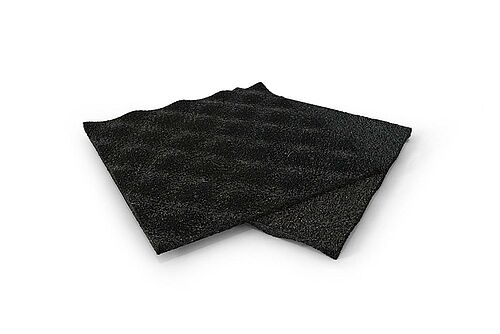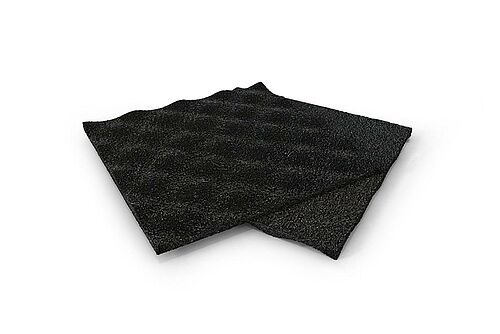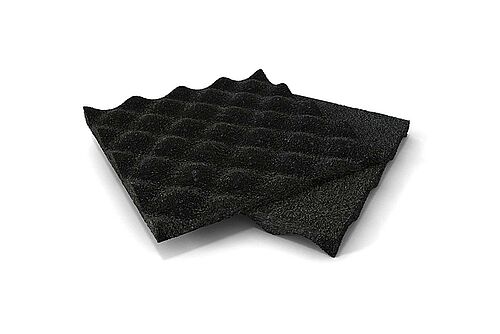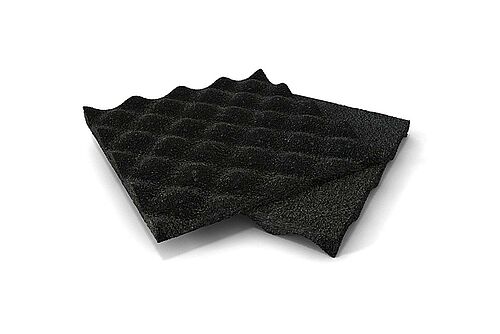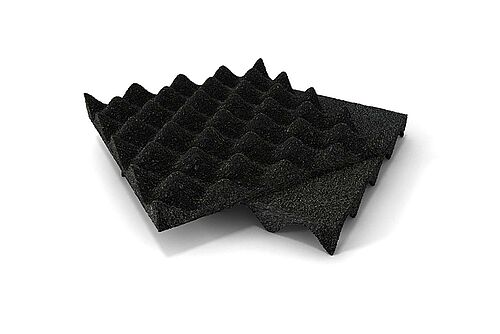sound control underlayments
Made from 92% post-consumer recycled tire rubber, REGUPOL sonus curve is a dimpled flooring underlayment designed to reduce the transmission of impact sound generated by footfall noise. REGUPOL sonus curve is commonly used underneath solid and engineered hardwood floors, concrete, screed, and floating floor systems. It is available in several standard thicknesses: 6mm, 8mm, 10mm, 17mm, and 25mm. Each thickness has its own benefits and applications it is best suited for. Need advice on your specific application? Ask the experts!
REGUPOL sonus curve
Made from recycled rubber REGUPOL sonus curve is not only a cost-effective solution but also one of the most sustainable ways to design floating floors as even stringent VOC emission regulations can be fulfilled.
With thicknesses between 6 mm and 25 mm impact sound reductions between ∆Lw ≥ 18 dB and ∆Lw ≥ 29 dB can be achieved. Multiple layers up to a total thickness of 75 mm will maximise the acoustical performance, if required. Disturbing low-frequency noise can be effectively reduced thanks to its profiled underside and the low dynamic stiffness of ≤ 13 MN/m³.

